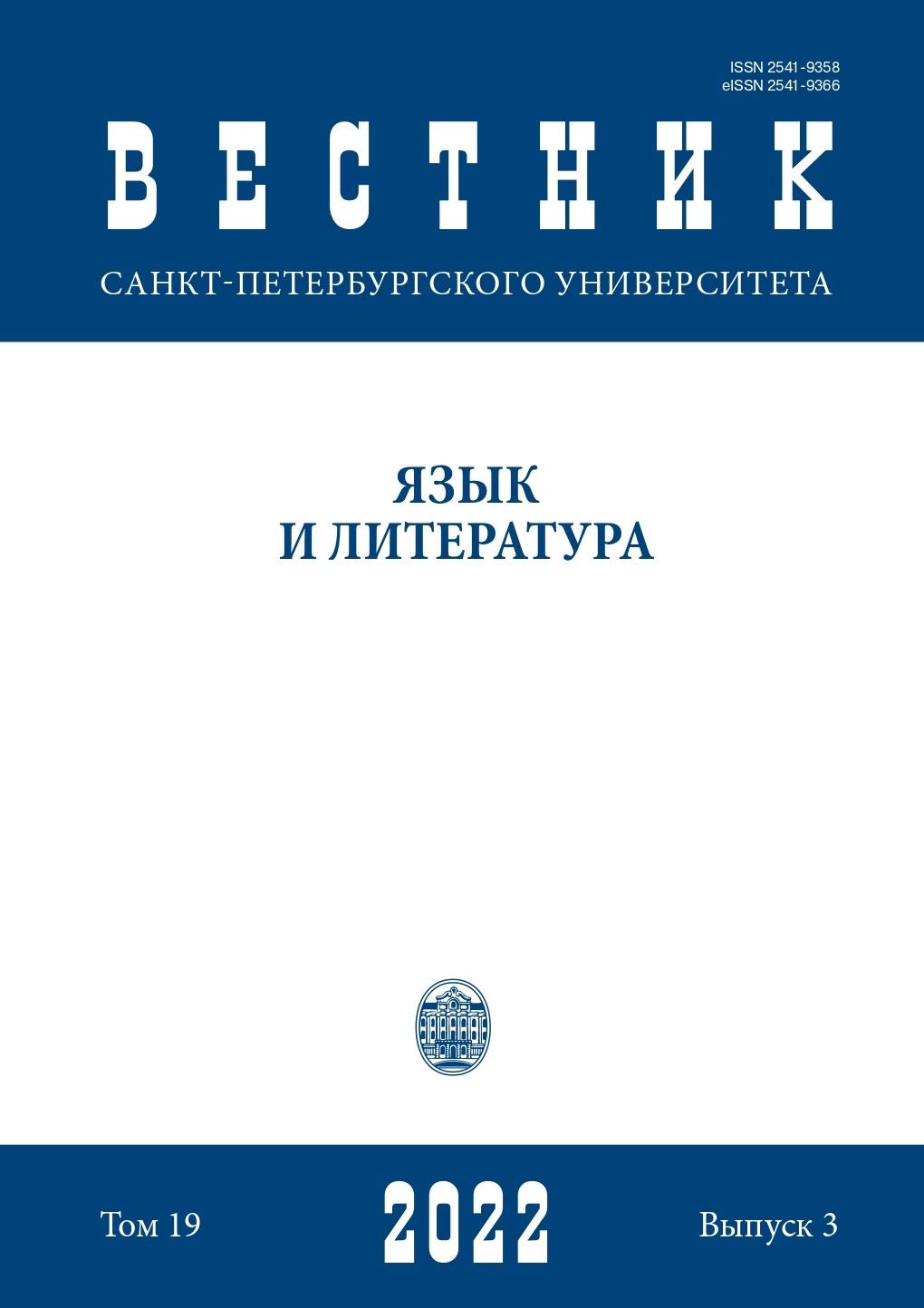Sergey Eisenstein: Director’s interpretation of Alexander Rzheshevsky’s screenplay Bezhin Meadow
DOI:
https://doi.org/10.21638/spbu09.2022.310Abstract
This article examines the interpretation of Alexander Rzheshevsky’s screenplay Bezhin Mea
dow by Sergey Eisenstein. Comparison of different versions of the script reveals the emergence
of the film’s conception and changes of the narrative made during the transition from the
screenplay to the shooting script. Special attention was given to Eisenstein’s interpretation
of the three key episodes of the future film: siege of the church, highway episode, and defeat
of the church. The reduction of narrative distance and the growth of the scale of an event are
exemplified are exemplifies by the scene of the siege of the church. From this point of view the
shelling of peasants from the church and the subsequent assault evoke episodes from Battle
ship “Potemkin” and October. The interpretation of the highway episode is based on the use of
visual and aural counterpoint. Eisenstein finds the equivalent of the spoken word through the
use of the contrasting montage that combines images with speech, noise and music. Eisen
stein strengthens the role of religious reminiscences in the central episode of the defeat of the
church while showing the destruction of religious objects. Each of these episodes in a way or
another implies violence and oriented to the expression of traumatic experience. In this sense
Rzheshevsky’s screenplay echoed Eisenstein’s creative preoccupations. It made possible the
depiction of historical events in such a way that history itself becomes a substitute for this
experience. The study of the narrative in the screenplay allows us to reconstruct the content of
the unfinished and forbidden film.
Downloads
References
Забродин 2011 — Забродин В.В. Эйзенштейн: кино, власть, женщины. М.: Новое литературное обозрение, 2011.
Клейман 1971 — Клейман Н.И. Комментарий к сценарию «Бежин луг». В кн.: Эйзенштейн С.М. Избранные произведения. В 6 т. Т. 6. М.: Искусство, 1971. С. 539–545.
Клейман 2004 — Клейман Н.И. Эйзенштейн, «Бежин луг» (первый вариант): культурно-мифологические аспекты. В кн.: Клейман Н.И. Формула финала. М.: Эйзенштейн-центр, 2004. С. 123–152.
Подорога 2017 — Подорога В.А. Второй экран. Сергей Эйзенштейн и кинематограф насилия. М.: BREUS, 2017.
Ромащук 2019 — Ромащук И.Н. Кинотрагедия «Бежин луг». Музыкальная академия. 2019, (1): 148–155.
Семерчук 2000 — Семерчук В.Ф. Под знаком политики и идеологии (христианская тема в отечественном кино). В кн.: Христианский кинословарь. 1909–1999. М.: Госфильмофонд, 2000. С. 7–17.
Юренев 1988 — Юренев Р.Н. Сергей Эйзенштейн. Замыслы. Фильмы. Метод. Ч. 2, 1930–1948. М.: Искусство, 1988.
Downloads
Published
How to Cite
Issue
Section
License
Articles of "Vestnik of Saint Petersburg University. Language and Literature" are open access distributed under the terms of the License Agreement with Saint Petersburg State University, which permits to the authors unrestricted distribution and self-archiving free of charge.






